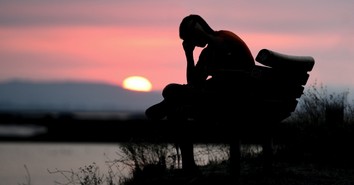10 C.S. Lewis Books You Haven’t Read Yet

SPECIAL OFFER: Enroll in this free online course on C.S. Lewis today!
During his lifetime, C.S. Lewis (1898-1963) published over 40 books, from Christian apologetics to children’s fantasy stories. He also wrote respected academic books like The Allegory of Love and English Literature in the Sixteenth Century Excluding Drama.
Many of Lewis’ books are famous. Surprised by Joy has many readers and has become even better-known as the basis for a play and movie, The Most Reluctant Convert. The Chronicles of Narnia and The Screwtape Letters gain new readers every year. Mere Christianity routinely tops lists of bestselling and influential Christian books.
Other books by Lewis aren’t so famous, even though they are well worth exploring. The following lists 10 of Lewis’ lesser-known books.
Further Reading: 10 J.R.R. Tolkien Stories You Haven’t Read Yet
Photo Credit: Unsplash/Caleb Woods
1. Boxen

1. Boxen
SLIDE 1 OF 10
Like many storytellers, Lewis started writing fiction when he was young. Boxen was an imaginary world Lewis created with his brother Warren, cataloging the stories about Animal-Land and its neighbor, Indiana (not the India of our world, one with talking animals). The stories range from political intrigue as the nation’s king and his advisors try to avoid a war to private feuds and amusing accidents. In 1985, Walter Hooper collected and published the Boxen stories with notes about when the stories were composed.
For obvious reasons, Lewis’ writing style isn’t as polished in the Boxen stories as in his later Narnia stories, but it’s not terrible. He provides some real moments of humor—especially when he imitates Victorian stories about men trying to “become gentlemen of society” and applies that to talking animals. Moments of slapstick humor and charm make this story feel like something out of The Wind in the Willows.
Further Reading: 15 Classic Christian Fantasy Books for Kids and Adults
Photo Credit: Getty Images/Vitalii Bashkatov
2. Dymer

2. Dymer
SLIDE 2 OF 10
Before Lewis became a well-known apologist and author of various novels, he hoped to become known as a poet. He published two books of poetry under the pseudonym Clive Hamilton during the 1920s: a collection of poems titled Spirits in Bondage and the epic poem Dymer.
Dymer follows a hero of the same name who lives in a controlled society. After breaking free of authority and going on the run, he has many strange experiences—from meeting a woman to almost being killed by a magician. Ultimately, Dymer must fight against a terrible foe: a monster he conceived with a mysterious woman.
Lewis observes in the 1950 reprint that when Dymer was first published, “like many better books, [it] found some good reviews and almost no readers.” Today, different scholars debate whether the poem is great or underdeveloped. Regardless, it’s an engaging story that shows some ideas (magic, romanticism, antiseptic societies cutting people off from nature) Lewis would explore in his later books. It’s also interesting to note this was written before Lewis’ 1930s conversion to Christianity, yet it has a mythic tone that suggests reaching for something beyond the material world. Later, during a 1931 walk with J.R.R. Tolkien, Lewis would discuss his love of myths, which Tolkien connected to the “true myth” of Jesus Christ. So, Dymer may be seen as a poem where the author wrestles with feelings slowly tearing him in two different directions.
Jerry Root’s book Splendour in the Dark reprints Dymer with annotations by David C. Downing, plus three essays where scholars talk about why the poem matters.
Further Reading: Who Were the Inklings Besides C.S. Lewis and J.R.R. Tolkien?
Photo Credit: Getty Images/Overearth
3. The Pilgrim’s Regress

3. The Pilgrim’s Regress
SLIDE 3 OF 10
Lewis’ first novel, published in 1933, is an allegory of his religious journey. The title and structure pay homage to John Bunyan’s classic The Pilgrim’s Progress, but with a key difference. Since Lewis grew up in a Christian home and saw his 1930s turn to Christianity as a return to that childhood faith, his allegory doesn’t follow a character discovering faith and going on a linear path toward the celestial city. Instead, Lewis’ character John grows up in the right place but is stirred by yearnings that lead him away from home. It’s only after John has many adventures and follows some false masters that he realizes what he seeks is where he began.
Like many allegories, it can take some work to understand what each element refers to. In 2014, the Marion E. Wade Center released an annotated edition edited by Downing, with notes explaining the references and connection to Lewis’ life.
Further Reading: The Life and Work of John Bunyan
Photo Credit: Getty Images/francescoch
4. Letters to An American Lady

4. Letters to An American Lady
SLIDE 4 OF 10
Lewis wrote many letters during his lifetime—in fact, three volumes of his letters, covering over 4,000 pages combined, have been published. These included letters to people who liked his books, discussions with old friends like Arthur Greeves about life and literature, and advice to people who wanted spiritual guidance. Letters to an American Lady fits between the second and third categories. Lewis started writing these letters in 1950, to an American widow who enjoyed his work and also enjoyed discussing religious topics. Lewis continued writing to her until his 1963 death, offering religious advice and trading friendly information about his life (his writing, his health, and later his marriage to Joy Davidman). The American lady’s name is omitted for privacy. Still, readers get a few details about her life (her financial problems, her conversion to Roman Catholicism) and see how Lewis extended friendship and sound advice in a difficult period of her life.
While Letters to an American Lady may not seem as exciting as Lewis’ letters to his famous friends, it’s an easy introduction to reading his letters that shows his personality. Even when Lewis wasn’t giving a formal presentation about Christianity, his thoughts about it were rare and insightful.
Further Reading: Rethinking Evangelism with C.S. Lewis
Photo Credit: Getty Images/scisettialfio
5. Out of the Silent Planet

5. Out of the Silent Planet
SLIDE 5 OF 10
While the Chronicles of Narnia is Lewis’ best-known fiction, it’s not his only fiction series. Out of the Silent Planet, published in 1938, started a trilogy of stories about a professor named Elwin Ransom who has strange experiences on earth and other planets.
In this first book, Ransom is on a walking holiday through rural England when he comes across an old schoolmate doing dubious scientific research. As the two men catch up, Ransom falls into a deep sleep… and wakes up inside a ship headed for Mars. His two captors explain that they don’t call their destination Mars. They call it Malacandra… the name that its native inhabitants use. Furthermore, Ransom has been taken captive because the last time his captors went to Malacandra, they were instructed to return with a third person to hand over.
The book starts the Space Trilogy (also called the Ransom Trilogy) off on an exciting note, and the surprises don’t stop as the plot continues.
Further Reading: 15 Great Christian Sci-Fi Books for Kids and Adults
Photo Credit: Getty Images/3DSculptor
6. The Dark Tower and Other Stories

6. The Dark Tower and Other Stories
SLIDE 6 OF 10
Compiled by Hooper after Lewis’ death, this book collects his shorter fiction. The Dark Tower is an unfinished third book in the Space Trilogy before Lewis switched gears and wrote a different conclusion, That Hideous Strength. The Dark Tower opens with Elwin Ransom back home at Cambridge after his many adventures. A colleague asks Ransom and other colleagues to see a new invention: a device that can see into other times. Using the device, spectators see a strange, almost post-apocalyptic world that could be the future… or, as Ransom suggests, maybe Hell itself.
Because The Dark Tower is an incomplete manuscript that takes Ransom’s adventures in a very different direction, it’s surprised many scholars. Kathryn Lindskoog contended that it was a forgery, but evidence unearthed in the 2000s suggests it’s legitimate. This book also includes four of Lewis’ short stories (two previously published in American sci-fi magazines) and an unfinished retelling of the Helen of Troy story. While readers may be frustrated that some of these stories are unfinished, they all have interesting moments and show Lewis could write more than just children’s fantasy and space adventures.
Further Reading: 5 Books by C.S. Lewis that Everyone Should Read
Photo Credit: Getty Images/Miiicha
7. Letters to Malcolm

7. Letters to Malcolm
SLIDE 7 OF 10
Like The Screwtape Letters, this is a collection of letters between two fictional characters. Unlike the aforementioned book, Letters to Malcolm isn’t a satire. Instead, Lewis presents various ideas about prayer—how Christians do it, why they do it, the difference between private and public prayer—to a recipient who is presumably also a Christian but working out his beliefs on the subject.
While Letters to Malcolm may not have the wit or clever concept that makes The Screwtape Letters so memorable, it provides excellent spiritual advice more straightforwardly. Like Lewis’ other writings o the spiritual life, it balances talking about the highs and the lows while reminding readers that the central point of following God is not happiness but transformation. We are blessed and find new purpose as God turns into something more than ourselves.
Further Reading: Screwtape and the Cure of Souls
Photo Credit: Getty Images/Eerik
8. Till We Have Faces

8. Till We Have Faces
SLIDE 8 OF 10
Lewis began thinking about this story while he was still in his twenties, planning to write it as a poem. Ultimately, he finished the story in the 1950s, by which point he’d become a Christian, married, and decided to write the tale in prose rather than verse. Based on the Greek myth of Cupid and Psyche, the story follows Orual, a princess who has never been favored as much as her more attractive half-sister. When her sister is sent off to be a sacrifice to the gods, Orual tries to rescue her... and discovers her sister is alive, but claims she’s become the bride of a god who won’t show his face.
Like his unfinished Helen of Troy retelling, Lewis finds clever ways to recast an ancient myth through a new narrator and emphasize themes that readers likely haven’t seen in other versions. Till We Have Face also features Lewis’ most complex female characters, possibly thanks to feedback from Davidman. Along with rich characterization, it also has rich imagery and dialogue with plenty of layers to unpack. Readers who think Lewis only wrote stories for children will be pleasantly surprised by this book.
Further Reading: The Enduring Legacy of C.S. Lewis
Photo Credit: Getty Images/Natalia Babok
9. On Stories

9. On Stories
SLIDE 9 OF 10
Along with giving radio presentations on religious topics and writing book-length studies of religious ideas, Lewis also wrote various articles about religion and literature. Hooper collected these articles into several books—including God in the Dock and The Weight of Glory. On Stories is a great place to start since it collects writings that show a side of Lewis many people miss: he was a literary critic.
The essays include Lewis’ thoughts on Tolkien’s The Lord of the Rings, his friend Charles Williams’ supernatural thrillers, and a reflection on his late friend Dorothy L. Sayers. Other essays consider literary figures like E.R. Eddison, criticisms of Lewis’ sci-fi writing, and how to write stories for children. More accessible than Lewis’ in-depth literary studies, yet thought-provoking in its own right, On Stories provides plenty for readers to consider.
Further Reading: Does The Lord of the Rings Have Christian Themes?
Photo Credit: Getty Images/bombermoon
10. A Grief Observed

10. A Grief Observed
SLIDE 10 OF 10
Published in 1961 under the pseudonym N.W. Clerk, this book is based on journals Lewis kept about his emotional journey while his wife died from cancer. He avoids sentimentality, working out his grief and anger, asking where God is in this heartbreaking situation.
Alister McGrath has described A Grief Observed as an interesting book to read alongside Lewis’ earlier book, The Problem of Pain. Faced with the harsh reality of what loss feels like, A Grief Observed takes a much less theoretical look at suffering. Sometimes Lewis’ words are shocking as he describes his sense of despair. However, as Madeleine L’Engle observes in her foreword to one edition, Lewis’ brutal honesty helps: he “makes it quite clear that the human being is allowed to grieve, that it is normal, that it is right to grieve, and the Christian is not denied this natural response to loss.”
Further Reading: Celebrating the Birth of C.S. Lewis
Photo Credit: Getty Images/FotoDuets

Originally published September 14, 2023.









